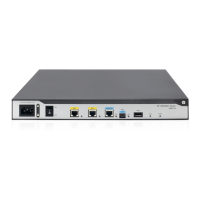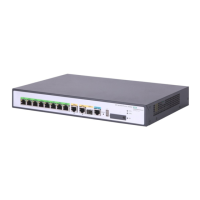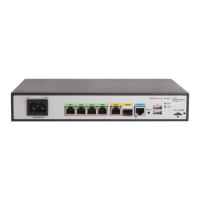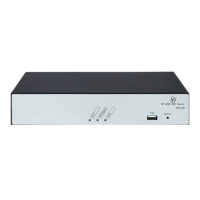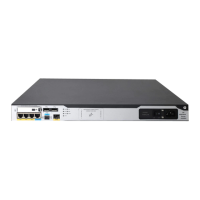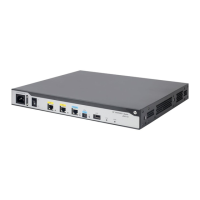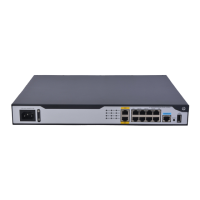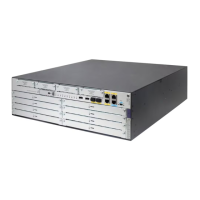Step Command Remarks
3. Bundle timeslots on the
interface into a PRI set.
pri-set [ timeslot-list list ]
By default, no PRI set is created.
Only one PRI set can be created at
a time.
The timeslots on a CT1/PRI
interface can be bundled into
either channel sets or a PRI set, but
not both at the same time.
4. (Optional.) Set other interface
parameters.
See "Configuring other CT1/PRI
interface parameters."
N/A
For the PRI set, the system automatically creates a serial interface numbered serial number:23. This
interface has the same logical features as an ISDN PRI interface and supports the following
configurations:
• DDR.
• PPP and PPP authentication.
• IP addressing.
• Interface backup settings if the interface is used as a primary or backup interface.
• Firewall.
Configuring other CT1/PRI interface parameters
Step Command Remarks
1. Enter system view.
system-view N/A
2. Enter CT1/PRI interface view.
controller t1 number N/A
3. Configure the interface
description.
description text
By default, the description of an
interface is interface-name
Interface.
4. Set the cable length and
attenuation.
cable long { 0db | -7.5db | -15db
| -22.5db }
cable short { 133ft | 266ft | 399ft
| 533ft | 655ft }
The long 0db keyword applies by
default.
5. Set the line code format.
code { ami | b8zs } The default is B8ZS.
6. Enable user data inversion.
data-coding { normal | inverted }
By default, user data inversion is
disabled.
7. Set the clock mode.
clock { master | slave }
The default is slave, which is line
clock.
8. Set the framing format.
frame-format { sf | esf } The default is ESF.
9. Set the line idle code type.
Idle-code { 7e | ff } The default is 0x7E.
10. Set the type and the number
of interframe filling tags.
itf { number number | type { 7e |
ff } }
By default:
• The type of the interframe filling
tag is 0x7E.
• The number of interframe filling
tags is four.
26
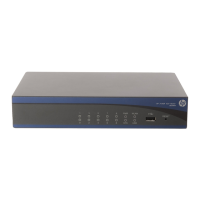
